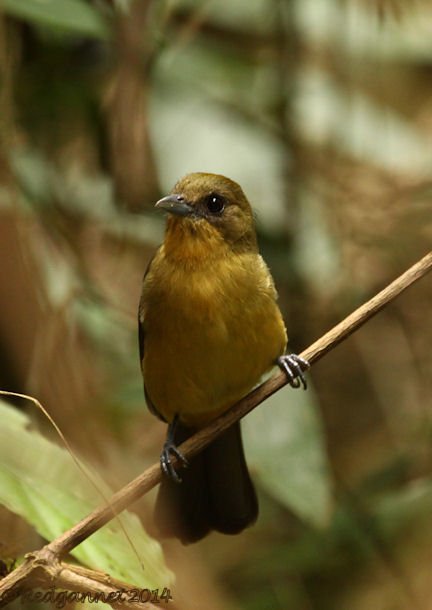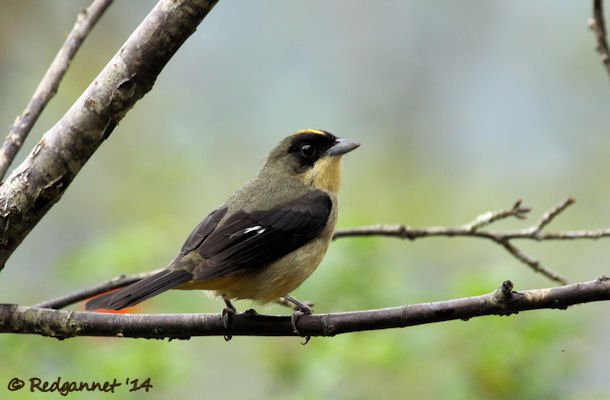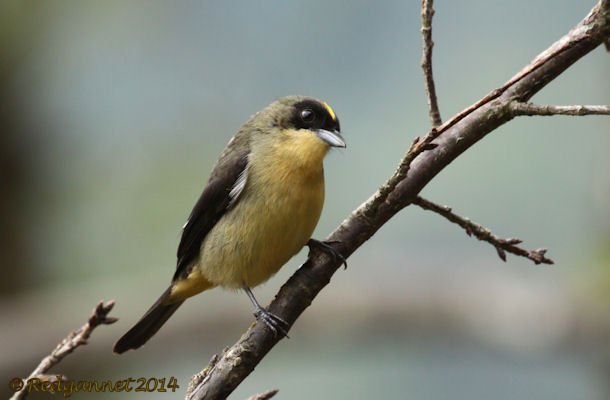
In the forests of South America, a birder is likely to cross the path of a feeding flock of brown birds represented by Woodcreepers, Spinetails, Foliage-gleaners and Xenops. Collectively these birds revel in the name, Funariidae. I am lucky enough to visit the Atlantic Forests of south-eastern Brazil from time to time and an encounter with one of these flocks always leaves me twisted. I am not able to retain in my head all the required details to identify these similar birds immediately and have to refer to the nearest field guide, juggling camera, binoculars and tripping over tree roots in the process.
There is one bird which continually evades identification. It is common enough, but it does not appear in my field guide. As it is usually found amongst a feeding flock of Funariids or Thamnophilidae (Antwrens, Ant-shrikes, Antbirds etc), I have always concentrated my searches in this section of the guide, but harboured a suspicion that it may be a female Tanager as some of these can be a non-descriptive brown. Woodcreepers and their allies often have a stiff, chestnut tail with spines to help as they cling to trunks of trees, but the tail on this bird was darker, broad and spineless. This week I found it consorting with a White-shouldered Fire-eye and tried to hammer it into the box where the female of that species should have been, but to no avail.
Our encounters usually take place in the dim, detail-dulling light of the forest understorey but this week, the bird gave up its credentials by coming out into the open. Strategically placed fruit, draws birds from the forest to open areas where they can be observed by waiting birders and at last, I got the chance to see my mystery bird and was able to confirm that she was certainly a Tanager. My book did not contain much in the way of female tanagers and certainly no illustrations that leapt out at me as a potential identifier, until her mate popped out onto a branch nearby.
Now it was obvious and I feel foolish not to have made the connection before. The Black-goggled Tanager is known to accompany feeding flocks around ant swarms and the female is really just a low contrast form of the male. I am now basking in a warm glow of deferred satisfaction, having made the ID at last.
If you enjoyed this post and would like to see more great images of birds, go to our 10,000 Clicks section where you will find our big (and growing) gallery page here at 10,000 Birds.
















Congratulations!